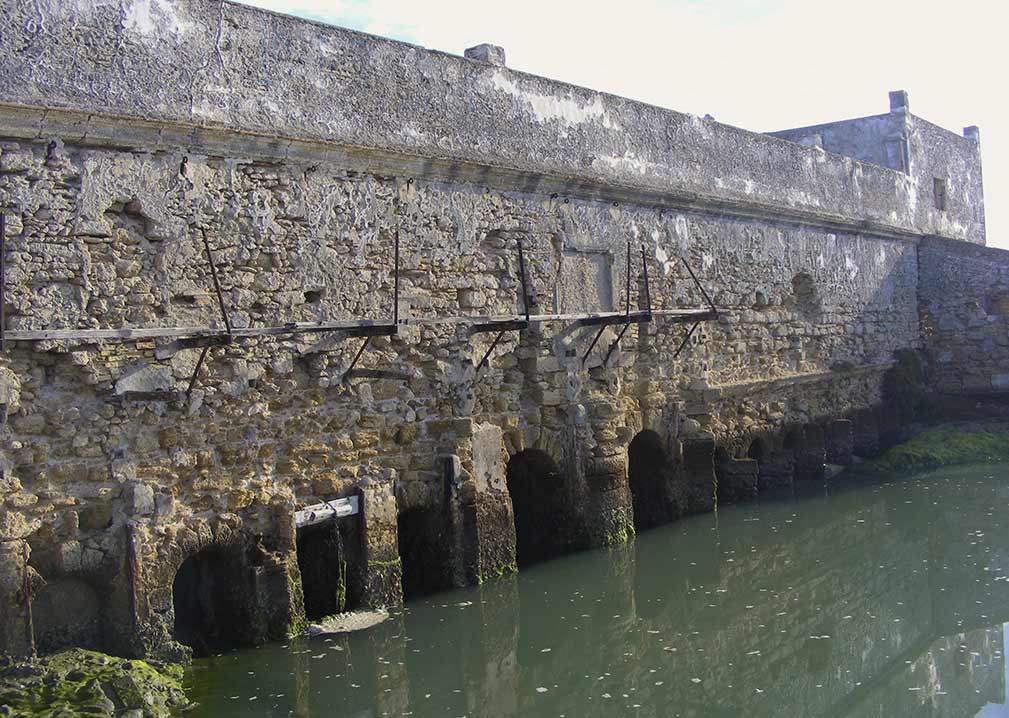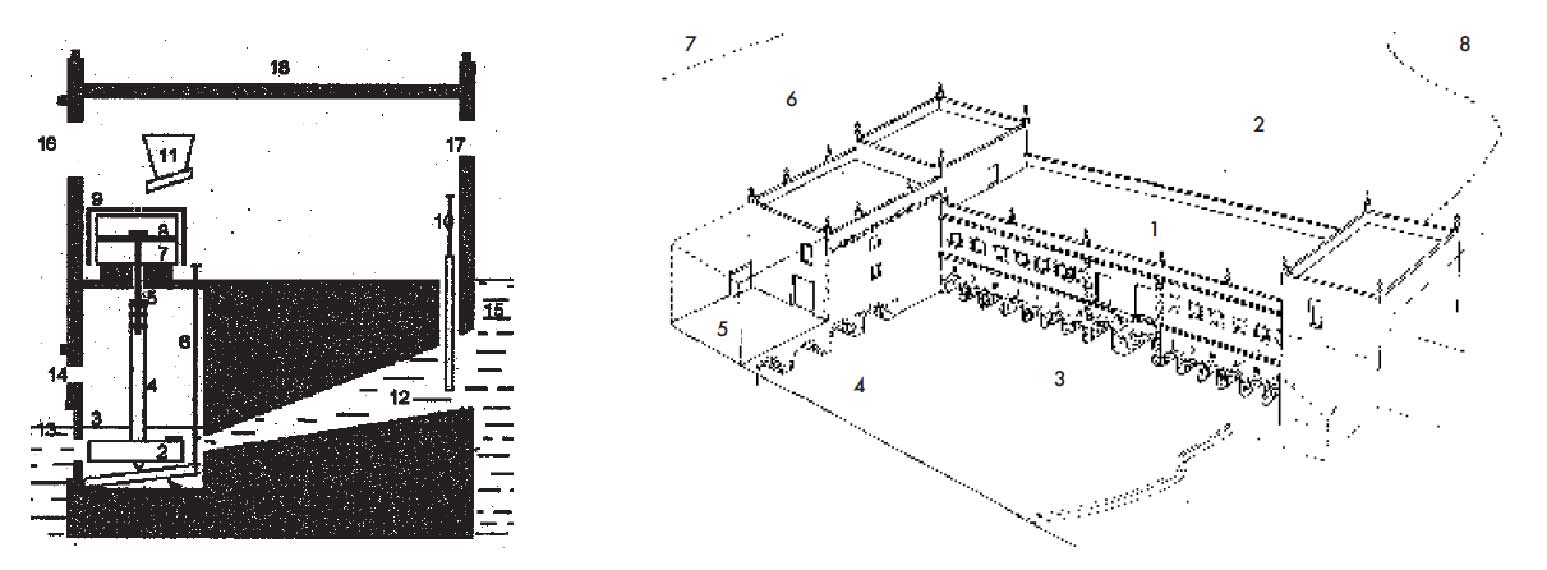Tide mill of the Arillo River
El Molino del Río Arillo is considered one of the most important tidal, “sea or bread mill” mills that existed throughout the western Atlantic, due to its grinding capacity with the 12 wheat grinding stones it possessed. It is located on the right side of the road between Cadiz and San Fernando, forming the boundary between the two municipalities and supplied flour to the cities of Cadiz and San Fernando.
The sea or tidal mills take advantage of the hydraulic force of the tides, as a necessary and inexhaustible source of energy to turn the stones and carry out the grinding of the wheat. The oldest known mills date back to the tenth century, on the coasts of ancient Mesopotamia and south-east England. The rise of these took place during the seventeenth and eighteenth centuries, until the end of the nineteenth century. However, with the arrival of the Industrial Revolution, they went in decline, until its activity ceased at the beginning of the twentieth century.

Its technology was simple: it consisted of a dam or pond that was fed water at high tide by channels. Once the high tide was completed and the pond was full, the tilt gates of the canal were closed by the pressure of the dammed water. After two hours from high tide and when the difference in level between the dammed water and that of the estuary was sufficiently appreciable, the water dammed by the flume was let out. This was done by activating a gate from inside the mill. The water came out with great force, turning the motor wheels or “rodetes” that, by means of an axis that united them, they turned the grinding stones.
 |
|---|
| Tide Mill of the River Arillo, between Cadiz and San Fernando. On the left, a section showing the operation of one of the mechanisms of the mill: 1. Bridge. 2. Rotor (perforated circular metal plate). 3. Cárcavo (the hollow part of the wheel). 4-5. Shaft. 6. Spillway. 7. Stone Bases. 8. Millstone or Grindstone. 9. Dust cover. 10. Gate. 11. Hopper. 12. Flume. 13. Pipe. 14. Skylight. 15. Boiler or dam. 16-17. Windows. 18. Flat roof. On the right, a perspective of the whole building and its surroundings: 1. Central vessel. 2. Boiler. 3. Empty tide. 4. Increasing tide. 5. Demolished sector. 6. Channel of River Arillo. 7. Salt Lake – Los Tres Amigos. 8. Salt Lake – San Felix. Source: AUFI-Industrial Heritage. |
It was built in several phases, starting in 1798 and after three successive extensions, it has resulted in the shape that we can see today. It seems that it stopped working in the 1930´s. Since 2002, it has been considered a cultural interest in the General Catalogue of Andalusian Historical Heritage, although it is currently in ruins.
Its structure makes it stand out from the traditional tidal mill typology, having undergone extensions and modifications throughout the years it was in operation. This was as a response to changes in the industry, as well as changes in the customs of the time.
The composition in schematic and functional plan is related to the industrial and military architecture. It has great geometric rigor in its structure, leading to an economic and easily expandable building. The milling stones were located in the main bay, leaving the other rooms for housing and also to store the grain. For its construction, oyster stone was used which was arranged in arches in the area that is in contact with the water. There were also rows of stone masonry for the building, which was reinforced with stone blocks for holes in the walls and corners.